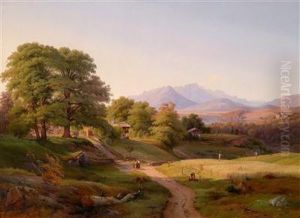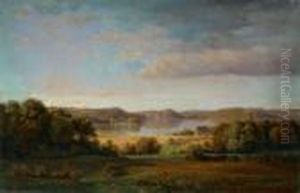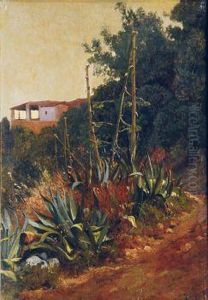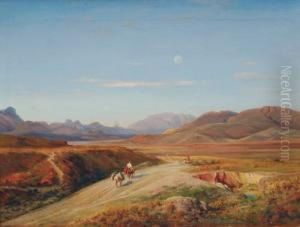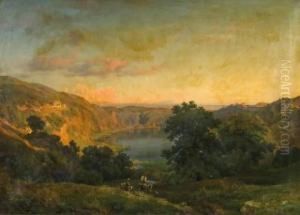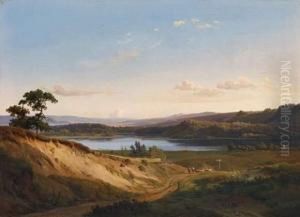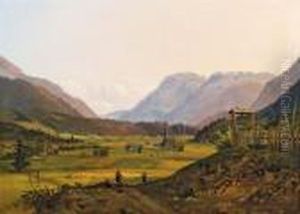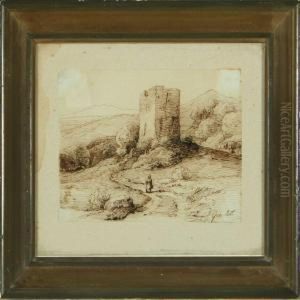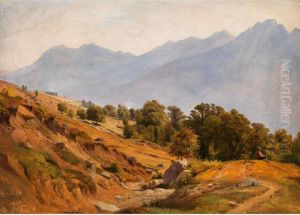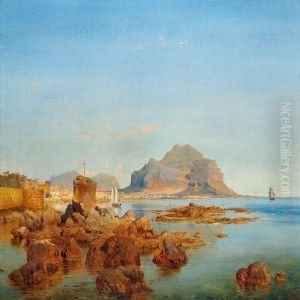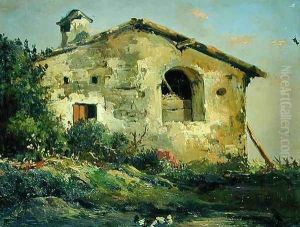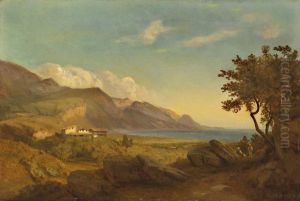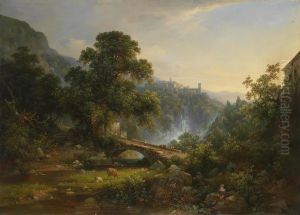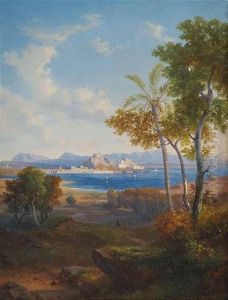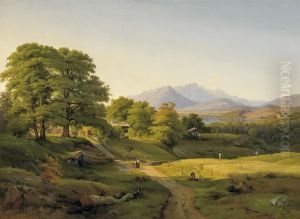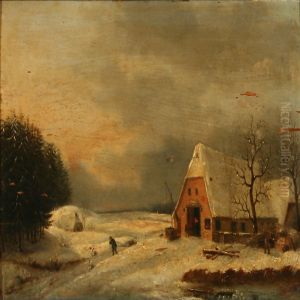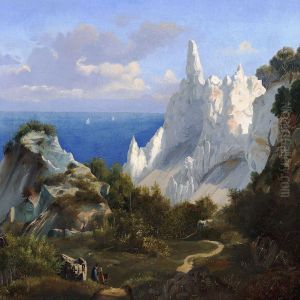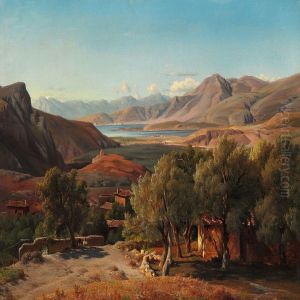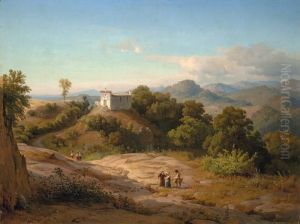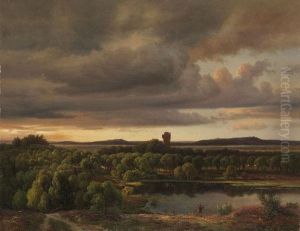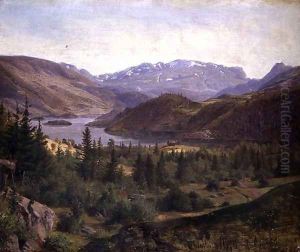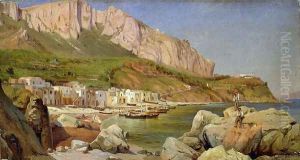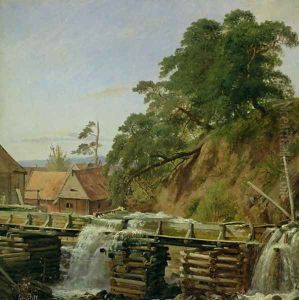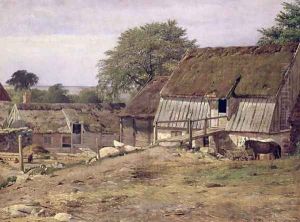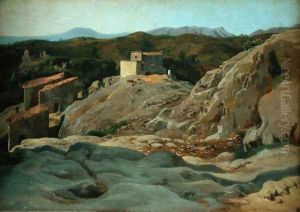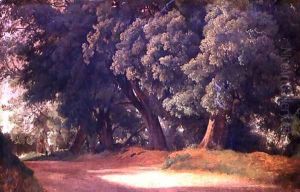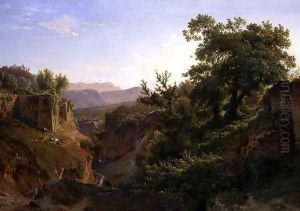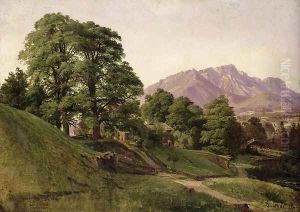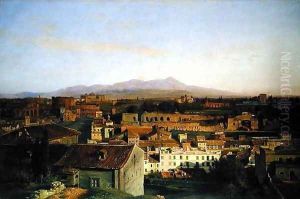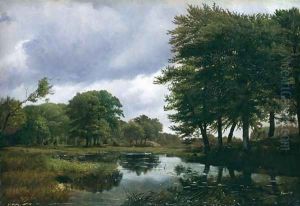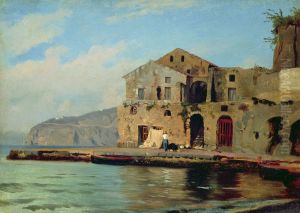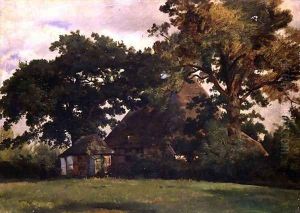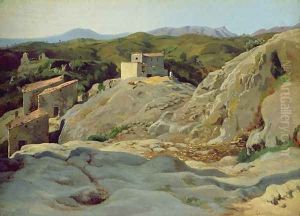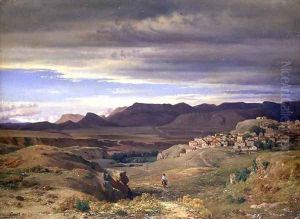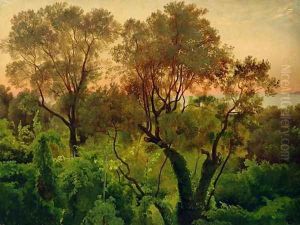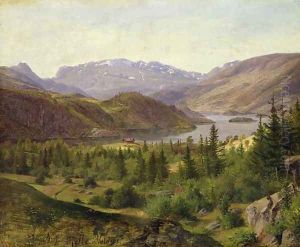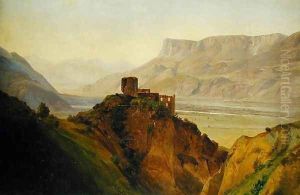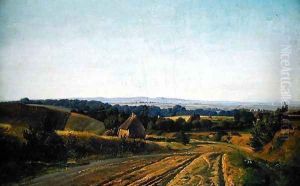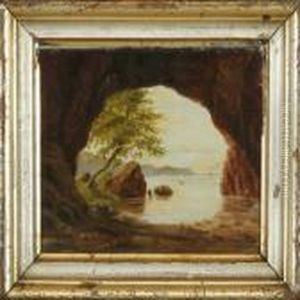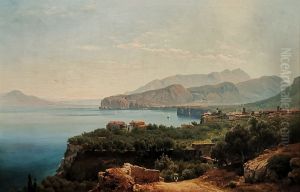Louis Gurlitt Paintings
Heinrich Louis Theodor Gurlitt, known as Louis Gurlitt, was a notable Danish-German landscape painter of the 19th century, born on March 8, 1812, in Altona, which was then a Danish town and is now a district of Hamburg, Germany. Coming from a family with strong artistic and architectural roots, Gurlitt initially trained under his father, who was a painter and architect, and later studied at the Copenhagen Academy.
During his formative years, Gurlitt was influenced by the Danish Golden Age of painting, a period characterized by a flourishing of Danish cultural life and the production of great works of art. In 1832, Gurlitt continued his education at the Düsseldorf Academy, which was a hub for the Romantic landscape painting tradition, and where he was influenced by the works of artists such as Johann Wilhelm Schirmer.
Gurlitt's career blossomed throughout the 1840s and 1850s, during which time he traveled extensively throughout Europe, drawing inspiration from various landscapes. He painted scenes from the Bavarian Alps to the Italian countryside, capturing the natural beauty with a keen eye for light and atmosphere. His works are characterized by their romantic sensibility, attention to detail, and often dramatic use of light.
In 1855, Gurlitt moved to Vienna, where he became a professor at the Academy of Fine Arts. He held this position for several years before moving back to Germany. Gurlitt's landscapes continued to attract attention, and he was commissioned for various important projects, including the decoration of the Stadthalle in Hamburg.
Gurlitt's legacy is marked by his contribution to the landscape genre and his influence on the artists of his time. His works can be found in museums and private collections throughout Europe. He continued to paint until his death on October 19, 1897, leaving behind a body of work that remains appreciated for its romantic portrayal of the natural world.
